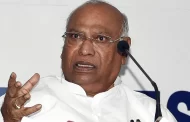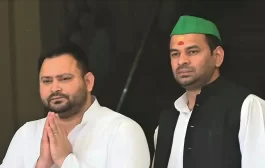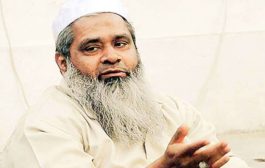In a deeply religious India, that venerates almost every form of natural resources and myriad deities and formless gods, the cow is a political animal. The gau mata, which is celebrated for its ability to nurture humanity in ancient Hindu scriptures, now features more prominently in newspaper headlines and election manifestos.
However, it was still a surprise when Wednesday’s newspaper headlines reported that it was a Congress-run government in Madhya Pradesh that slapped the stringent National Security Act on three Muslim men accused of slaughtering a cow. Many raised eyebrows that while cow slaughter was outlawed in the state, charging the accused with NSA act was at best a dramatic overreaction, and at worst gross injustice. BJP too called out its political rival on its hypocrisy as Congress leaders have repeatedly attacked the former for being ‘too strict’ on those accused of cow smuggling and/or slaughter.
However, an effort to understand how cow protection became the universal brand of politics, at least in electorally important north Indian states, brings us back to the point when Hindutva first made its mark in India as a political force: i.e., the BJP.

The cow has turned into a potent political totem, much like the seasonal iftar photo-ops, ever since BJP graduated from Ram mandir politics to gau mata politics. This is not to say that cow protection is a recent acquisition to the BJP’s arsenal of majoritarian policies, yet, the shift in focus from karsevaks to gau rakshaks over the years is subtle but palpable.
In the 2004 vision document of BJP, an entire header was dedicated to the cause of installing a temple in Ayodhya, however, gau mata figured just once in a bland line promising protection of cow and its progeny. In 2009, the animal got a section of its own — with four mentions across the 49-page document — yet, true to its public image of a shy and reticent animal, the cow mostly stayed away from headlines. It was during the 2014 elections that the cow truly entered politics and its popularity rose by leaps and bounds. The manifesto still stuck to the previous election’s format (the text a copy paste job from last year’s manifesto) but it was the way in which Narendra Modi took up the issue that transformed India’s polity.
In his campaign for office, Modi referred to the danger of a “pink revolution” under the ‘pro-Muslim’ Congress rule. It was a play on Congress’ “green revolution,” under which agricultural output increased, suggesting the party had allowed the production and export of meat including beef to surge, with the sole intent to let the dominant butcher caste in Muslims to prosper and thereby earn their unflinching support.
Furthermore, this aggressive adoption of the cow politics encouraged angry right-wing chauvinists in the BJP folds to take Modi’s pitch a step further, to directly create a faultline of us versus them (beef eaters but primarily Muslims).
Sample some of these comments: “I will call those people terrorists who indulge in cow smuggling and slaughter but do not desist from their actions,” said Rajasthan BJP leader Gyan Dev Ahuja. On the subject of rising atrocities by vigilante groups, he said: “It is not a planned murder or beatings. It’s people’s anger which is part of a natural course. It bursts when police fail to take cognisance.”
BJP MLA from Vijayapura in Karnataka Basanagouda Patil Yatnal had this to say when devastating floods hit Kerala: “In Kerala, people openly slaughter cows. What happened? Within a year, a situation like this (flood) arose. Whoever hurts the Hindu religious beliefs will face such consequences.”
BJP legislator and Muzaffarnagar riots-accused Sangeet Som had threatened to give a “befitting reply” if “innocents were framed” for the lynching of Mohammad Akhlaq in Dadri.
The Congress, meanwhile, had been less forthcoming in its politics of cow. It was Congress state governments which first banned cow slaughter as long ago as in 1955, yet, Indira Gandhi remained fastidious and consciously chose not to impose a nationwide ban even as a section in the Congress shared that view. As The Indian Express reported, the agitation of 1966 caught Gandhi off-guard yet, she did not give in to the agitation immediately. The article states that she promised a high-level panel to decide on a blanket ban on cow slaughter. However, she was careful to ensure that the majority of the members of the committee consisted of trustworthy Congress politicians, secularists, as well as federal and state bureaucrats. The panel, unsurprisingly, ruled that the ban was unnecessary. On the other hand, after the Congress split in 1969, the faction led by Indira chose its new election symbol as that of a cow suckling its calf.
In fact, an article in The Scroll argues that it was Indira who first discovered the art of using communal symbols to outmanoeuvre both Hindu and Muslim communitarian parties. Indira came up with the idea of attending iftar parties. Her successor, Rajiv, on the other hand, backed the Ram janmabhoomi movement and to this day is considered the invisible hand that facilitated the Babri mosque’s demolition. On the other hand, the Congress made a show of denying Muslim women alimony in the Shah Bano case to impress upon voters that the party was the lone protector of Muslims rights.
However, these are desperate times. No balancing act is enough to neutralise BJP’s aggressive posturing, endorsing Hindu symbols, mythology and religious worship-as-a-political-event is a political compulsion in order to win back (or retain) the favours of majority community as religious faultlines deepen. This was visible from the fact that whenever Congress is peeved by BJP’s excessive overtures to the cow belt, it has no qualms in reminding voters that it was mostly Congress governments that had banned cow slaughter in about 24 states, including Bihar, way back in 1955 when the BJP was not even formed.
Congress leader Digvijaya Singh said his party was open to a discussion on bringing a national law against cow slaughter at a time when debate on lynchings by vigilante mobs was at peaking. The same Economic Times report also quotes another Congress leader Raj Babbar, apparently trying to push his ally Lalu Yadav’s comments in a positive light. To a question on RJD chief Lalu Prasad saying Hindus too eat beef, Singh said, “Lalu Yadav is not supporting cow slaughter. How can any Yadav be against cows?” Babbar said.
This was in October 2016. Jump to the Assembly elections held last year and one would have noticed the bulk of news literature produced on Congress’ so-called return to ‘soft Hindutva’.
Ahead of the Assembly elections in October 2018, Congress doffed its Gandhian topi to the BJP’s politics of cow. Some of the claims in its manifesto to entice god fearing cow loving voters was that the party will begin marketing cow urine, build a gaushala in every panchayat, allocate a separate fund for them, establish temporary camps to treat injured bovines and perform their last rites if required. It also promised to make additional land available for cattle to graze. Add to this, Congress president Rahul Gandhi flaunting his Hinduness and visiting temples to convey that he and his party were not anti-Hindu as the BJP alleged. The result was an openly communal campaign starring gau mata in the lead role as Congress and BJP traded charges over the depleting number of cows and proliferation of slaughterhouses in the state.
The mock advantage of this cow politics is that the Congress government in Madhya Pradesh really appears to be sticking to its poll promises (at least as far as cows are concerned.) According to The Indian Express, last week Chief Minister Kamal Nath announced that 1,000 government-run cow shelters will be set up in the state within four months. Animal Husbandry Minister Lakhan Singh Yadav said the government is also considering the introduction of a cess on purchase of luxury cars and other similar measures to raise funds for cow welfare.
As the Lok Sabha election approaches in a couple of months, the cow will indeed attract headlines, trigger political mudslinging and maybe a few votes as well but will hardly go beyond what it used to be — gau mata and a political animal.
source: Firstpost.com







































